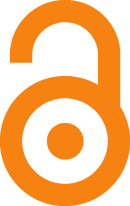International Institute of Space Law |
|
| Article | Applying Space Traffic Management in Policy & Regulatory Design |
| Authors | Fatheya Al Sharji |
| DOI | 10.5553/IISL/2019062004006 |
|
Show PDF Abstract Author's information Statistics |
| This article has been viewed times. |
| This article been downloaded 0 times. |
|
The importance of Space Traffic Management (STM) has increased in the international space community and has become widely recognized. This might be due to the increasing need to enhance space safety and security. Today, STM is still a controversial issue and there is no internationally agreed standard, definition, or framework in this regard. Recently, states are realising the importance of the topic and the need for further international collaboration. Therefore, several states, international organizations and individuals started to dive deep into this topic. The UAE Space Agency has conducted a study on the application of STM to national policies and regulatory designs. This study reviewed some of the international studies such as the IAA Cosmic Study of 2017. It also reviewed some domestic regulations and policies such as the 2018 U.S. policy on STM. The study in general focused on certain areas such as the definition of STM, provisions in the international space treaties that are relevant to STM, elements of space traffic management, and whether if these elements covered by the UAE Space Policy, draft Law, and Regulations. The UAE Space Agency, has interest in STM in general. The study has taken into consideration the main elements and standards of STM, when developing the domestic regulations and processes. The UAESA has and will continue also to join other global efforts towards developing a suitable international regulatory framework for STM. In this paper, the study’s elements and comparisons will be described, along with concluding remarks. In addition, it will indicate how these conclusions about STM were integrated into the National Space Policy and various Regulations within the UAE Space Regulatory Framework. |

